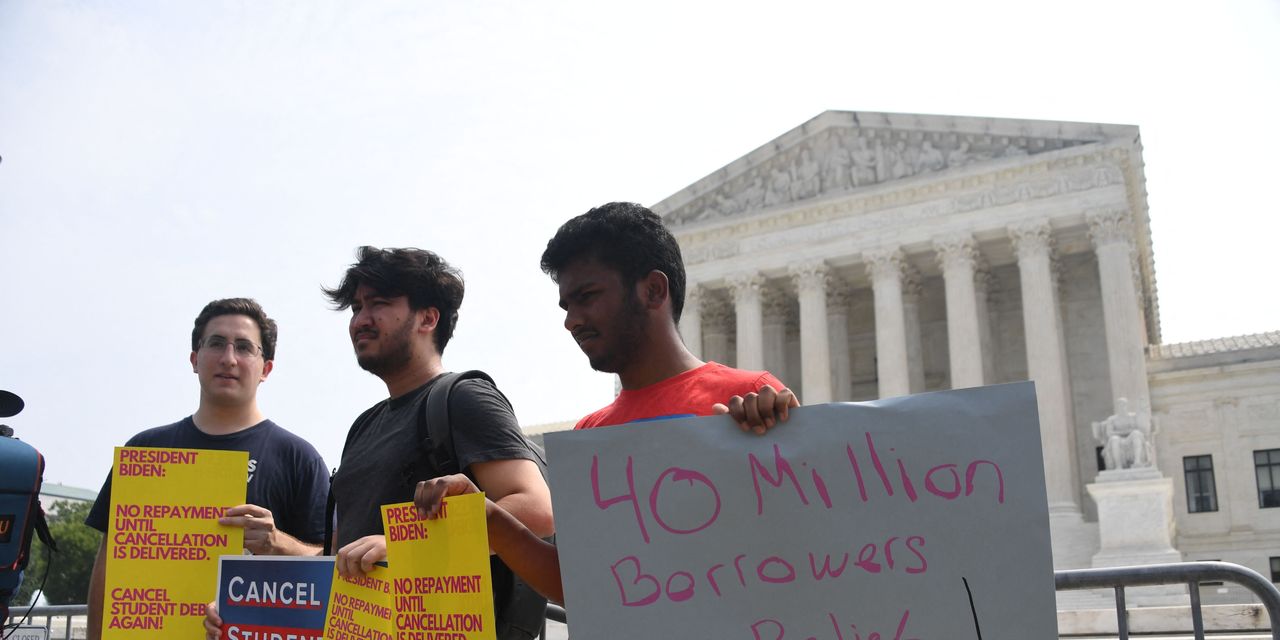When the freeze on federal student-loan payments, interest and collections ends this fall, borrowers will be protected temporarily from some of the harshest consequences of missing student-loan bills. But if borrowers can afford to make their payments, they should.
That was one message from James Kvaal, the under secretary at the Department of Education, speaking to a virtual conference of financial aid administrators Tuesday. “It’s not a pause,” Kvaal said of the “on-ramp” the Department will provide borrowers when student-loan bills start up again this fall after a more than three year pause.
Kvaal’s comments came a little more than a week after the U.S. Supreme Court struck down the Biden administration’s plan to cancel up to $20,000 in student debt for a wide swath of borrowers. Biden administration officials had argued both in court and elsewhere that without mass debt forgiveness, the return to repayment after the COVID-era payment pause would result in a wave of delinquency and default.
Now, borrowers will be resuming payments without the debt relief. As part of the bill Congress passed to raise the nation’s debt limit earlier this year, lawmakers required borrowers to resume student-loan payments this fall.
The on-ramp is meant to help mitigate some of the challenges borrowers might face returning to repayment, President Joe Biden said when he announced it last month. Under the initiative, borrowers who miss their student-loan payments in the first 12 months after the student-loan freeze ends won’t be reported to credit agencies or debt collectors.
But during his remarks, Kvaal ticked off some of the ways in which this grace period differs from the COVID-era student-loan pause. For one, interest will start accruing on borrowers’ student loans in September; during the COVID pause, interest didn’t build on borrowers’ loans. Borrowers will also be receiving student-loan bills starting this fall, which wasn’t supposed to happen during the COVID freeze.
In addition, for borrowers trying to qualify for Public Service Loan Forgiveness — an initiative that allows government and certain nonprofit workers to have their federal student debt canceled after 120 payments — or hoping to have their debt discharged after at least 20 years of payments under other payment plans, they’ll have to make payments during the on-ramp period if they want to make progress towards those goals. The months of the COVID payment pause counted towards the number of monthly payments needed to qualify for forgiveness under those programs even if borrowers didn’t make a payment.
The grace period is part of the Biden administration’s broader response to the Supreme Court’s decision, which Biden announced hours after the court handed down its opinion. The administration is taking another stab at mass student debt cancellation and grounding it in a different legal authority than the one the court knocked down.
With this second attempt, the Department of Education will be convening stakeholders to hash out the actual rule it will use for the debt cancellation plan. “A rulemaking process often takes a year or longer, but I can tell you in this case we’re going to do everything we can to move as quickly as possible,” Kvaal said.
During his remarks to the financial aid officers, Kvaal also touted a new plan — which the President announced in the wake of the Supreme Court’s decision — aimed at making student-loan payments more affordable and manageable. Some of its features will go into effect this fall when the payment pause ends.
Still, Kvaal lamented that an unprecedented number of borrowers will be reentering the student-loan system at the same time the Office of Federal Student Aid, which oversees the student-loan program, is coping with a “budget crunch” that could affect its outreach efforts. For months, advocates and borrowers have expressed concern that slashed customer service hours at student-loan servicers and other cuts could make the return to repayment challenging for borrowers and the student-loan system.
Kvaal encouraged the financial aid officers to communicate with their students and alumni about the new payment plan and other changes to the student-loan system the Biden administration has implemented over the past few years.
“This is a challenging time,” for borrowers, Kvaal said, “there’s a lot of anxiety and concern that I hear from students. I understand what a big deal this is for the 28 million households that are facing this.”
“Our advice to borrowers is, take advantage of whatever benefits are available to them, but you do need to make payments, we recommend you make payments,” he added.
Read the full article here





